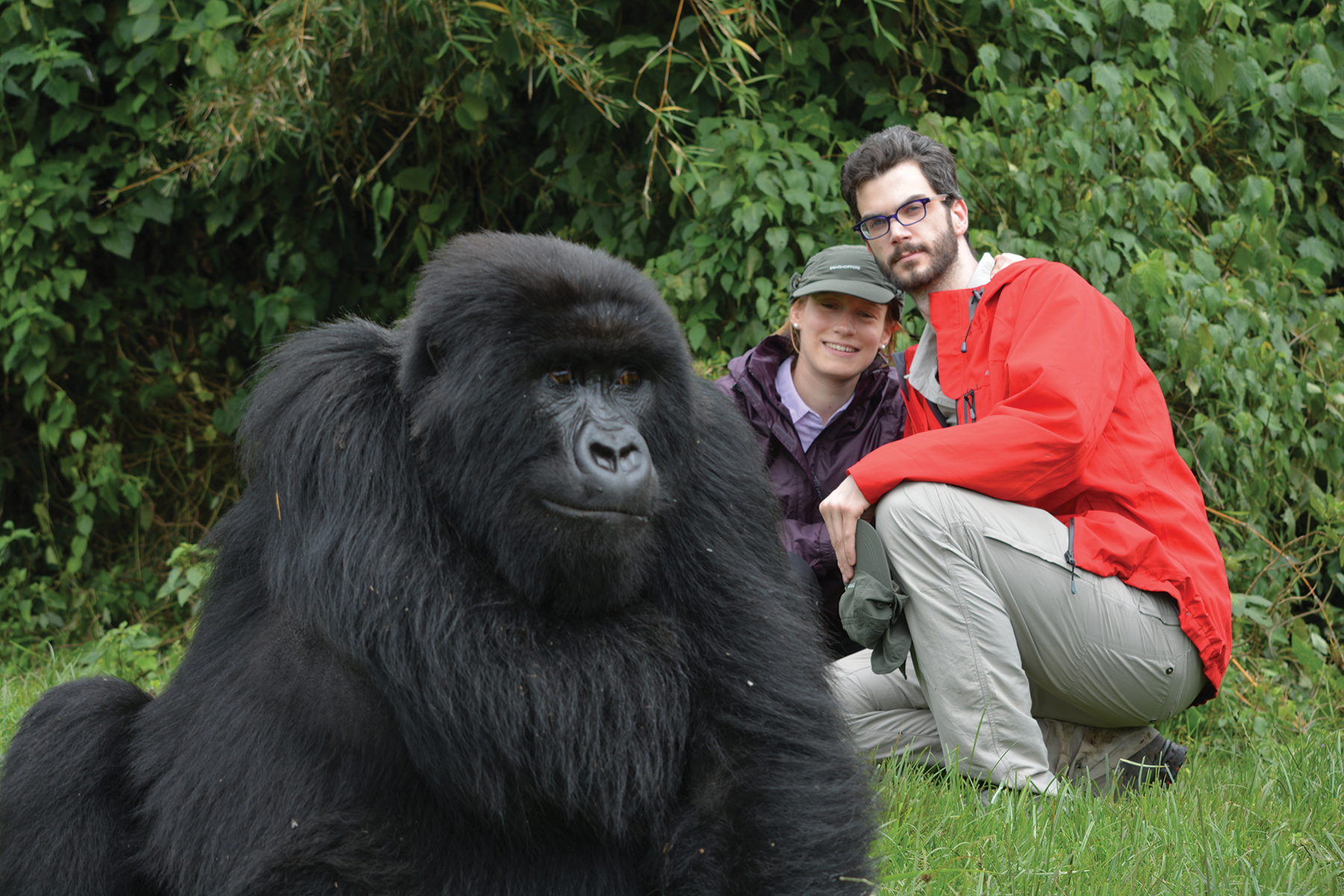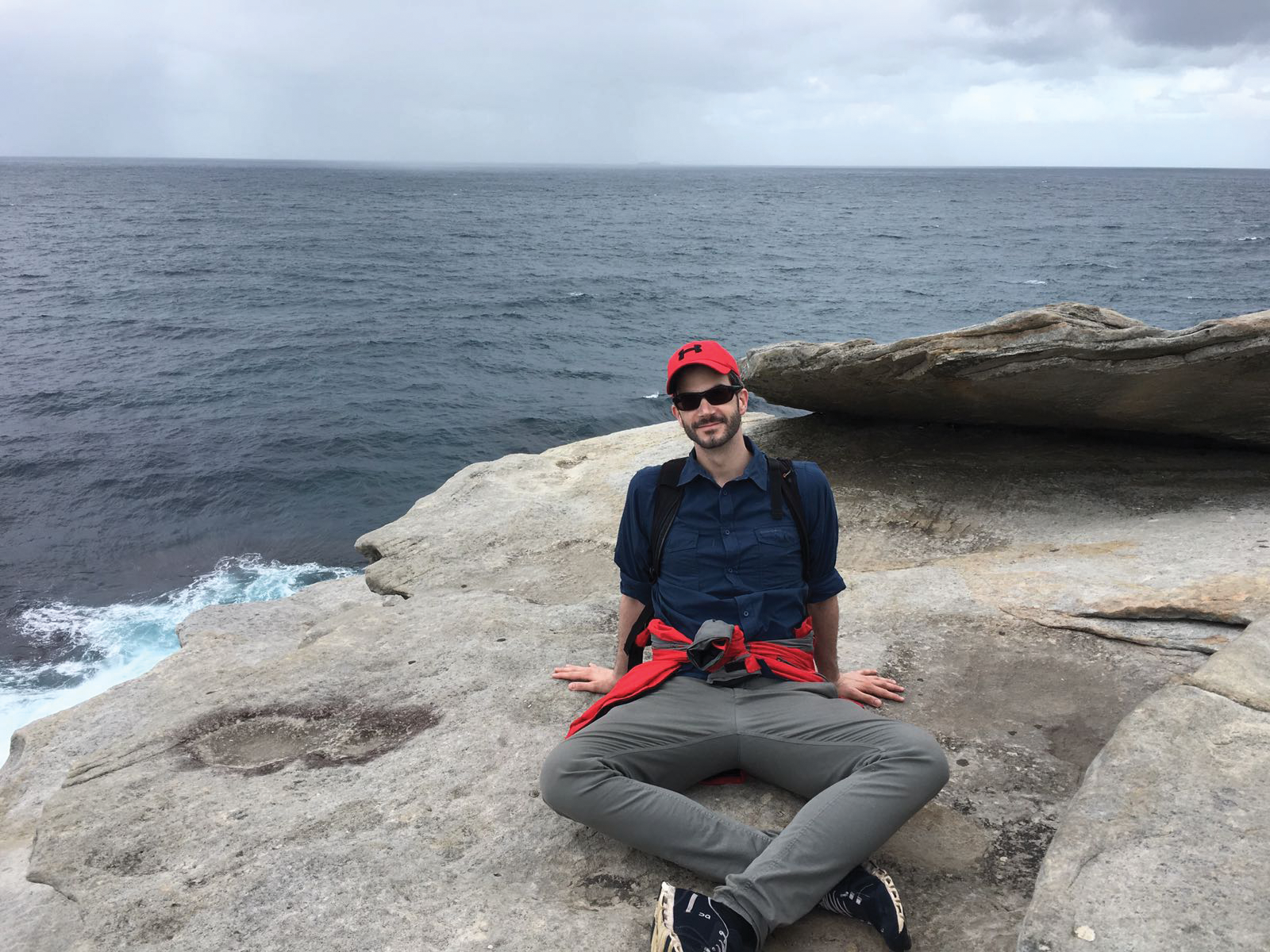
Getting to Know You
Currently, what book are you reading, what TV series are you binge-watching, what app do you use the most, and where do you get your daily news?
Book: During my most recent vacation, I finished The Discovery of Slowness, by Sten Nadolny. It is a novel about a person who figures out how to live his dream despite his shortcoming of acting more slowly (and more carefully) than others.
TV series: Unfortunately, I do not have much time to watch TV. I enjoyed Breaking Bad, but that was already some time ago.
App: I have a simple health app, MyTri GPS Triathlon, that counts my steps and records all other kind of sports I do. I also like CamScanner and PubMed on Tab.
Daily news: I mainly read newspapers online, both local and international.
What is something in your life you would happily do again, and what is something you would never do again?
Happily do again: I got married this year on May 20, and we went on a honeymoon to Sri Lanka and the Maldives. I would happily marry my wife again.
Never do again: When I was backpacking a lot and trying every food offered to me, I had bad food poisoning a few times. I would not like to have that again, and I no longer try everything offered to me.
What are three places at the top of your bucket list?
I spend most of my money on traveling, but there are many places I have not visited yet.
No. 1: Tibet.
No. 2: Colombia.
No. 3: Democratic Republic of Congo.
If you had to donate half your income tomorrow, to whom would you give it?
I have worked together with a friend of mine from Congo, Freddy Mbumba, MD, on a project in the south of Uganda. He is one of the hardest working people I have ever met. I would donate my income for another project undertaken alongside him.
If there is one high-risk thing that you have not done but remain curious about, what is it?
It is not really a high-risk thing, but I would like to try parachuting. In fact, I have promised myself to do it in autumn of this year.


Your Thoughts on Ophthalmology
What is the health care landscape like in your country?
In Austria, more than 99% of the population is insured, and ophthalmic surgery is entirely paid for by the insurance companies. We do not have a copayment system, as is present in Germany.
How enthusiastic are you about the future of ophthalmology?
As both a researcher and a clinician, I am excited about the future. We are fortunate to be able to perform research projects in different fields of ophthalmology at the Vienna Institute for Research in Ocular Surgery in collaboration with companies in the ophthalmic field. It is fascinating to be able to use and to help develop novel devices that are not on the market yet.
What products in the pipeline excite you the most?
There are several products that have great potential. OCT technology is definitely No. 1 in my book. This technology is already in use for optical biometry, and I am sure that it will be a key player for toric IOL power calculation and for diagnostics in corneal diseases in the future. Intraoperative OCT technology has also been shown to be useful. For example, it is expedient to measure the aphakic eye during cataract surgery with OCT technology in order to ensure the best IOL power selection. I am sure that OCT technology will be vital in the future of this field.
What was your most memorable moment in surgery?
Perhaps that would the first time that I finished a cataract case completely on my own, without a supervisor in the room. The feeling when I lifted the microscope and thought, “It’s done,” was amazing.
What recent studies or technologies have
influenced your surgical technique?
Several studies on biometry have changed our practice in the hospital. The study by Aristodemou and colleagues, comparing different IOL power calculation formulas in a large data set, was compelling.1 Olsen’s paper on how to correct IOL power calculation for the second eye was also helpful,2 as was the technique described by Little et al to save the rhexis.3 But there are many others. Soon, we will have the results of the PREMED study, undertaken by the ESCRS, which will influence our prophylaxis procedures against cystoid macular edema after cataract surgery.4
What was the toughest decision you have had to make as an ophthalmologist?
It is always hard to accept when a patient does not want treatment. I remember one glaucoma patient who refused to take his drops or to have surgery or laser treatment. He did not attend follow-up visits for years, until one eye was blind and the other eye had a minor visual field defect. Even then, he would not take any drops, have surgery, or undergo laser treatment. Although it was his decision, I could not bear to let him go. I asked him to come for checkups with different family members, and each time I explained, again, what could be done to avoid blindness in his second eye. In the end, he agreed to let me perform an argon laser trabeculoplasty, and his IOP improved.
How has ophthalmology changed since you started practicing?
I have not been in the field very long, but already there have been significant changes. One is OCT technology, as mentioned previously. When it comes to macular pathologies and glaucoma, diagnostics without OCT are no longer state of the art. There are many other areas where OCT technology fits in as well.
What advice can you offer the new generation of ophthalmologists?
Maybe I am too young to offer advice. I would say, though, never to forget that the patient always comes first. A second bit of advice is this: Do not rush into your career. It is better to know the steps you want to achieve and try to master one step before taking the next. Sometimes others may move faster, but, in the end, it is about being good at what you do and not about being the first to do something.
If you could trade lives with a fellow ophthalmologist for 1 day, who would it be and why?
That is a hard one. My first thought was Oliver Findl, MD, MBA. It is amazing how many different things he can do (and has to do) at once and how much he has achieved in research and surgery. But it would also be interesting to see ophthalmology through the eyes of a colleague from a developing country, such as Dr. Mbumba, whom I mentioned previously. It is impressive how much he squeezes out of the limited supplies available to him and how innovative he is. Maybe I would be greedy and change half a day with each of them. If deceased ophthalmologists also count, I would trade with Anton Elschnig, MD, the Austrian ophthalmologist for whom Elschnig pearls and Elschnig spots are named. He was one of the very early cornea surgeons.
If you were forced to limit your practice of ophthalmology to one procedure, what procedure would you choose and why?
I would choose cataract surgery. Cataract patients are happy after surgery in almost all cases, which also makes me happy.

Your Thoughts on Business
What differentiates your practice from those of your competitors?
Because I work in a hospital, I do not really have competitors. The ophthalmology department of the Hanusch Hospital, of which Dr. Findl is the head, combines effectiveness and hospitality. We are a relatively small department, but we perform by far the highest number of cataract surgeries in Austria and high numbers of other surgical procedures. This alone is something to be proud of, but actually I am much more proud of the fact that patients often tell me that they like to come to our center because we take care of them as a person, not just a set of eyes.
How do you feel about private equity, and is there a place for it in ophthalmology?
This is not a large issue in Austria. In my opinion, it is important to run a clinic or practice efficiently and also cost-effectively, but, as soon as the commercial interest takes over, there is an ethical problem. Every patient should have access to the same treatment options, and every clinical decision has to be based on scientific evidence, not on marketing strategies.
How do you approach marketing your practice and specific procedures you offer?
We are a public hospital, and every patient receives what he or she needs without cost, including toric IOLs. We implant premium IOLs mainly in clinical studies, but we also have a small number of private patients who want multifocal IOLs. To be honest, we tell them all the disadvantages of multifocal IOLs, and we will implant them only if they are then still keen on receiving them.
How do you or your practice keep staff members happy?
As I am part of the staff, I can say that a key factor for happiness is good teamwork. If people know that they are an important and appreciated part of the team, it is much easier for them to work through tougher times.
What is your end game?
I am applying for a fellowship next year in Sydney, Australia, and I would like to become a cornea specialist. Because I am happy at the Hanusch Hospital, I would like to return to that hospital after the fellowship to be an anterior segment surgeon and also to start a private practice.
1. Aristodemou P, Knox Cartwright NE, Sparrow JM, Johnston RL. Formula choice: Hoffer Q, Holladay 1, or SRK/T and refractive outcomes in 8108 eyes after cataract surgery with biometry by partial coherence interferometry. J Cataract Refract Surg. 2011;37(1):63-71.
2. Olsen T. Use of fellow eye data in the calculation of intraocular lens power for the second eye. Ophthalmology. 2011;118(9):1710-1715.
3. Little BC, Smith JH, Packer M. Little capsulorhexis tear-out rescue. J Cataract Refract Surg. 2006;32(9):1420-1422.
4. Nuijts RMMA, Simons RWP, Wielders LHP, van den Biggelaar FJHM, Winkens B, Schouten JSAG. Prophylactic treatments against CME after cataract surgery. CRST Europe. May 2015.


